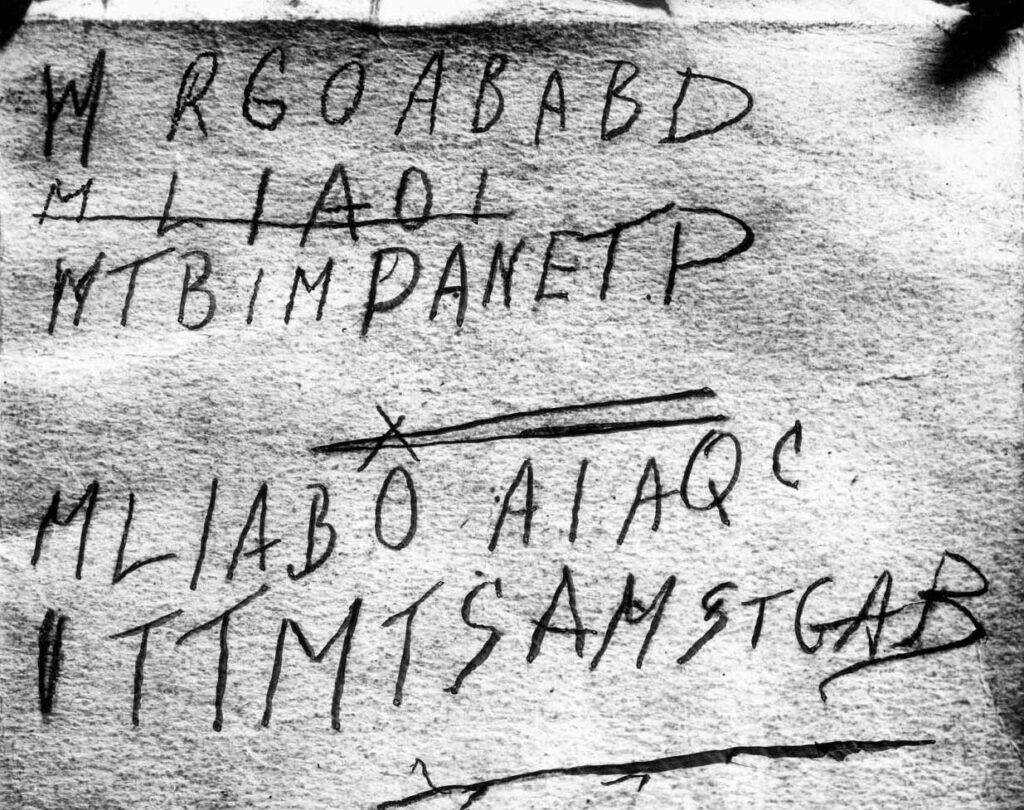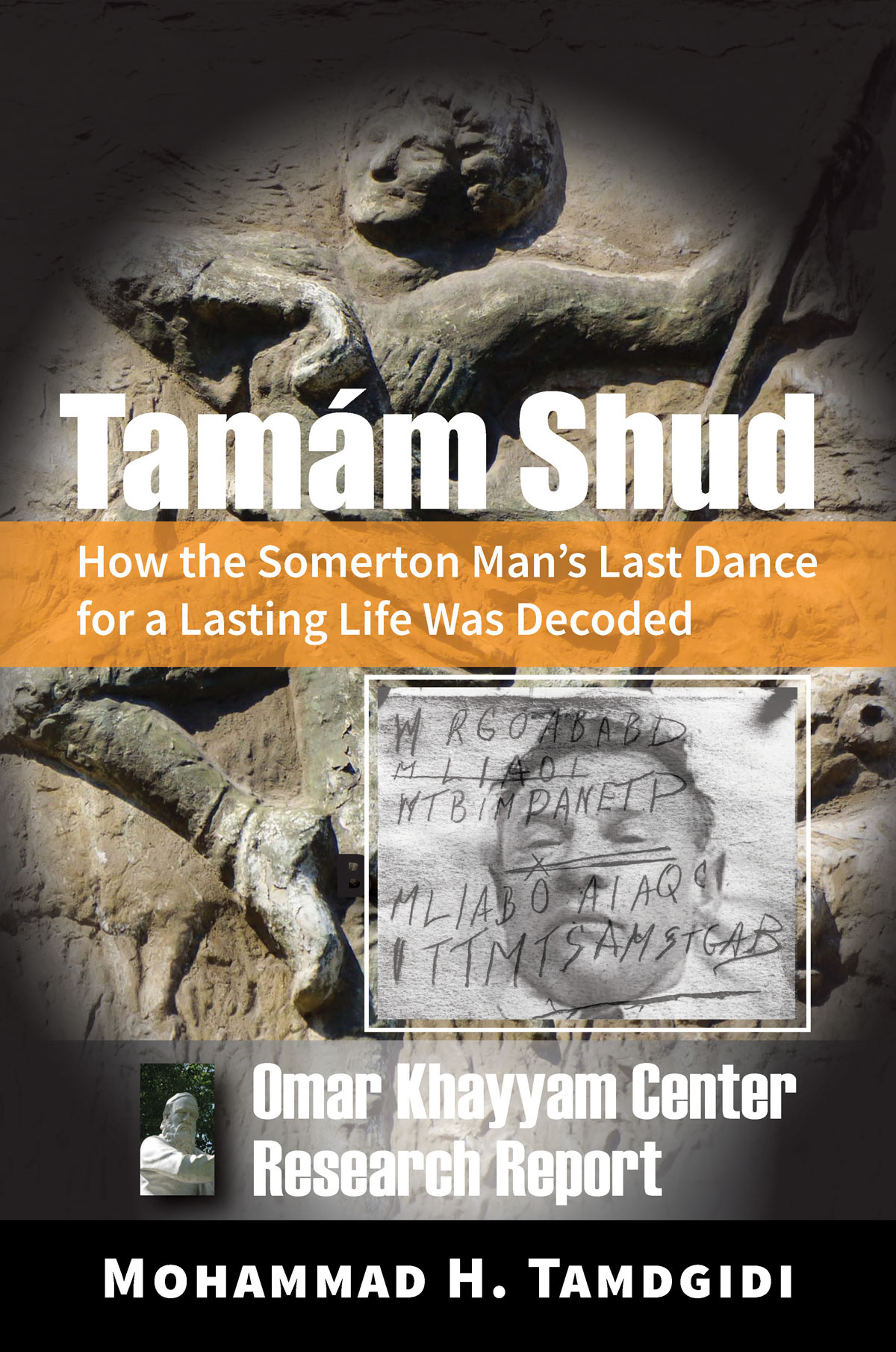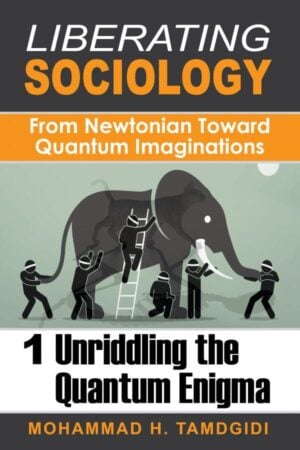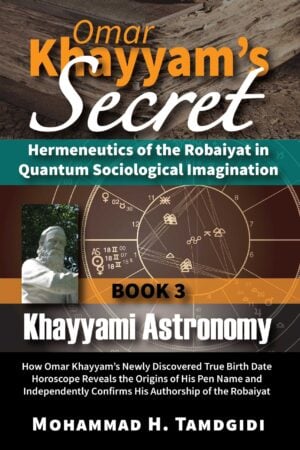Tamám Shud: How the Somerton Man’s Last Dance for a Lasting Life Was Decoded — Omar Khayyam Center Research Report
$29.00 – $49.00
In this report the Somerton man’s code was deciphered in 2021 to be a suicide contemplation note he drafted as a quatrain giving a gist of why and how he planned his last dance for a lasting life. It was the creative DNA of his suicide plot.
[2024 Update Note: For a detailed new update on the interpretation of the code in the context of new findings proposed and reported in 2022 and thereafter about the identity of the Somerton man as being Carl Webb, read OKCIR’s 2024 research report here, a press release for which was published on April 15, 2024 (see here). The 2021 publication still has evidentiary value since it documents how the 2021 deciphering of the Somerton man code, preceding 2022 findings, anticipated the 2022 proposed findings and its results.]
Publication Date: October 1, 2021
Note: The ePub ebook edition of this title (ISBN: 9781640980259) can be purchased from major online ebook stores worldwide.
Description
Tamám Shud: How the Somerton Man’s Last Dance for a Lasting Life Was Decoded — Omar Khayyam Center Research Report
Author: Mohammad H. Tamdgidi
Publication Date: October 1, 2021
Human Architecture: Journal of the Sociology of Self-Knowledge (ISSN: 1540-5699)
Monograph Series, 2021

Description
[2024 Update Note: For a detailed new update on the interpretation of the Somerton man’s code in the context of new findings proposed and reported in 2022 and thereafter about the identity of the Somerton man as being Carl Webb, read OKCIR’s 2024 research report here, a press release for which was published on April 15, 2024 (see here). The 2021 publication still has evidentiary value since it documents how the 2021 deciphering of the Somerton man code, preceding 2022 findings, anticipated the 2022 proposed findings and its results.]
In this OKCIR Research Report, hermeneutic sociologist, Khayyami scholar, and founding director of Omar Khayyam Center for Integrative Research (OKCIR), Mohammad H. Tamdgidi, Ph.D., reports having at last solved the mystery of the code associated with the so-called “Somerton Man” or “Tamám Shud” case.
The mysterious code appearing on the back page of a first edition copy of Edward FitzGerald’s The Rubaiyat of Omar Khayyam—found months following the death of The Somerton Man (TSM) in South Adelaide, Australia, on Dec. 1, 1948—was a suicide contemplation and planning note he was poetically drafting for himself in the form of a quatrain on the back of his copy of The Rubaiyat, giving a gist of why and how he planned to carry out a deliberately mystery-laden suicide as his last dance for a lasting life. The code was the creative DNA of his suicide plot.
It was written in the ‘Tamám Shud’ transliteration style—in this case not from Persian, but from Arabic with which he must have been familiar, either natively due to coming ancestrally from the ethnically diverse and widely multilingual Russian Caucasus and/or by training and education. In other words, the ‘Tamám Shud’ torn-out piece found in TSM’s fob pocket not only served as a bread crumb lead to his suicide note, it also offered the key to the code’s deciphering.
DNA is a self-replicating matter that reproduces the basic structure of a substance. TSM’s ‘code’ offers the DNA of his last dance performance in public hoping for a lasting life, one that was sketched amid his medical suffering. He was reflecting on his life, terminal illness, and expected imminent death, while reading the meanings conveyed about life and death in FitzGerald’s translation of Omar Khayyam’s Rubaiyat—a work of art that offered TSM a practical and proven example of how one can physically die but endure in human memory and spirit forever.
This report mainly focuses on deciphering TSM’s code, but the findings are also used to shed brief new light on one and/or another alternative wider story of what took place in Adelaide in 1948, in the years leading to it, and in the decades thereafter. The report invites readers to rethink the relevance of Omar Khayyam’s poetry to the case, and also asks a pertinent question about another fold of the mystery, that is, why did it take so long to decipher a code that could have actually been decoded much earlier?
The Somerton Man or Tamám Shud case has important lessons for us beyond the confines of the personal troubles of a man and those he knew, inviting us to use our sociological imaginations to explore such troubles in relation to the public issues that concern us all beyond the shores of Australia, and beyond the national and disciplinary walls fragmenting our lives, universities, and scientific methods in favor of transcultural and transdisciplinary modes of inquiry.
The report ends with a dancing celebration for deciphering the code as a new window to learning the true story and possible identity of the Somerton Man.
About the Author
Mohammad H. Tamdgidi, Ph.D., is the founding director and editor of OKCIR: Omar Khayyam Center for Integrative Research in Utopia, Mysticism, and Science (Utopystics) and its journal, Human Architecture: Journal of the Sociology of Self-Knowledge (ISSN: 1540-5699), which have served since 2002 to frame his independent research, pedagogical, and publishing initiatives. He is a former associate professor of sociology specializing in social theory at UMass Boston and has taught sociology at SUNY-Binghamton and SUNY-Oneonta.
Besides his currently in progress work published in the 12-book series Omar Khayyam’s Secret: Hermeneutics of the Robaiyat in Quantum Sociological Imagination (Okcir Press), Tamdgidi has previously authored Liberating Sociology: From Newtonian Toward Quantum Imaginations: Volume 1: Unriddling the Quantum Enigma (2020, Okcir Press), Gurdjieff and Hypnosis: A Hermeneutic Study (2009, Palgrave Macmillan), and Advancing Utopistics: The Three Component Parts and Errors of Marxism (2007, Routledge/Paradigm). He has published numerous peer reviewed articles and chapters and edited more than thirty journal issues.
Tamdgidi holds a Ph.D. and M.A. in sociology in conjunction with a graduate certificate in Middle Eastern studies from Binghamton University (SUNY). He received his B.A. in architecture from U.C. Berkeley, following enrollment as an undergraduate student of civil engineering in the Technical College of the University of Tehran, Iran.
His areas of scholarly and practical interest are the sociology of self-knowledge, human architecture, and utopystics-three fields of inquiry he invented in his doctoral studies and has since pursued as respectively intertwined theoretical, methodological and applied fields of inquiry altogether contributing to what he calls the quantum sociological imagination. His research, teaching, and publications have been framed by an interest in understanding how world-historical social structures and personal selves constitute one another. This line of inquiry has itself been a result of his longstanding interest in understanding the underlying causes of failures of the world’s utopian, mystical, and scientific movements in bringing about a just global society.
Tamám Shud: How the Somerton Man’s Last Dance for a Lasting Life Was Decoded — Omar Khayyam Center Research Report
Published by: Okcir Press (an imprint of Ahead Publishing House) • Belmont, Massachusetts • First Edition: October 1, 2021
100 pages • 6×9 inches • Includes references
Library of Congress Control Number (LCCN): 2021919688
ISBN-13: 9781640980228 (hard cover with dust jacket: alk. paper)
ISBN-13: 9781640980235 (soft cover: alk. paper)
ISBN-13: 9781640980242 (ePub ebook)
ISBN-13: 9781640980259 (PDF ebook)
CITATION: Tamdgidi, Mohammad H. 2021. Tamám Shud: How the Somerton Man’s Last Dance for a Lasting Life Was Decoded—Omar Khayyam Center Research Report. (Human Architecture: Journal of the Sociology of Self-Knowledge, Monograph series). Belmont, MA: Okcir Press.
Where to Purchase this Book: The various editions of this volume can be ordered from the Okcir Store and all major online bookstores worldwide (such as Amazon, Barnes&Noble, Google Play, and others).
Table of Contents
Tamám Shud: How the Somerton Man’s Last Dance for a Lasting Life Was Decoded — Omar Khayyam Center Research Report
About OKCIR—i
About the Author—ii
About this Book—iv
Preface—1
1. Introduction: The Somerton Man Case—3
2. The Code: Preliminary Observations—6
3. Preliminary Interpretive Considerations—11
4. Using Online Resources to Illustrate the Decoding—12
5. ‘Tamám Shud’ Is Also the Decoding Key—13
6. The Language Environment of the Code—17
7. Strategies for Making the Code Difficult to Decipher—20
8. Starting with the Last Main Line of the Code—23
9. The Third Main Line of the Code—29
10. The Second Main Line of the Code—38
11. The Crossed-Out Line of the Code—45
12. The First Main Line of the Code—47
13. Interpreting the Code as a Whole—50
14. The Relevance of Omar Khayyam’s ‘Rubaiyat’—58
15. The Wider Story—62
16. An Alternative and/or Additional Wider Story?—68
17. Why Did It Take So Long to Solve the Puzzle?—71
18. Conclusion: The DNA of A Last Dance for A Lasting Life—78
19. A Dancing Celebration—82
Endnotes (Reference Links)—83
A Dancing Celebration
To celebrate this deciphering of the Somerton man’s code, it seems fitting to watch a few clips depicting Caucasian dances, two from Russia and the Dagestan and one from Iran’s Azerbaijan. A quatrain from Omar Khayyam will bring this post to a close.
Before those clips, however, let us first watch the following clip about the wonderful story of a legendary Lezginka dancer and teacher of dancing from Dagestan, and all his students, as narrated in “The Caucasian Sensation,” in his and their own voices and lives. He offers us a glimpse into the life and the dancing art of someone like TSM. For further information, see here.
Following WWII, Russian victory and goodwill dance tours, including those from the Caucasus, were widely organized and performed throughout the West. Here is a clip from a performance in 1955 in Paris, France.
Below is a clip introduction from the Dagestan Lezginka State Dance performance (it can also be watched here):
The similarity of Robin Thomson’s clothing found here to the Dagestani dancers’s clothing above must be coincidental, but is still noteworthy. Is he unknowingly wearing TSM’s Dagestan dancing shirt gifted to him by way of his mother?
The clip below is a beautiful performance of the ancient Azeri dance Yalli by Azeri dancers. Further information about the dance can be found (in Persian) here. In English the dance and its background are introduced here. The last person in the row of the dance is traditionally called Aiaqçi (اياقچى).
May the Somerton man dance in joy again during his second burial in the arms of his new and hopefully newly found old families. The four-lined DNA code storing his heart and mind’s story, hoping for a lasting life as sketched on the back of his Rubaiyat copy, proved resilient and telling despite the dusting of his body remains, the same having been proven time and again across the centuries by Omar Khayyam.
——————————————————————
When before the angel’s feet I crestfallen die,
And like a bird by the angel defeathered lie,
Beware, mold my clay into nothing but this Jug,
So I may live again from its fragrant supply.
— Omar Khayyam (Tamdgidi translation)
——————————————————————
Disclaimer: This research report is published for informational purposes, and contains findings about an historical event and a person’s suicide in the past and matters pertaining to his life and death. The study is investigative and explorative, not prescriptive in any way, shape, or form. It is an effort in understanding the circumstances surrounding an event and the nature of what transpired, which include understanding hermeneutically the mind-set and perspectives held by the person or persons related to the matter of suicide. Therefore, the findings should in no way be considered as an advocacy for any decision resulting in suicide and ending human life. Life is the most precious gift anyone can receive and enjoy. If you or someone you know struggles with issues pertaining to mental and physical health or self-harm, you should directly and immediately consult a medical professional or mental health consultant in your local or wider community in the nation in which you live.
Live Reference Links for Printed Editions
Read the Above Publication Online
To read the above publication online, you need to be logged in as an OKCIR Library member with a valid access. In that case just click on the large PDF icon below to access the publication. Make sure you refresh your browser page after logging in.







